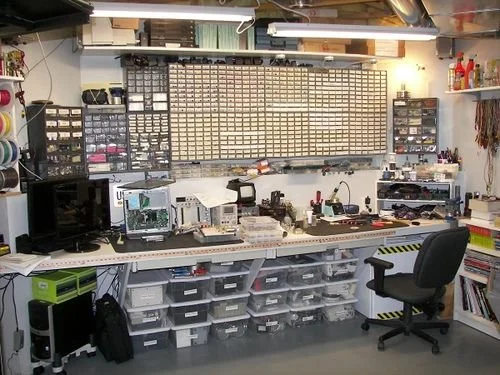Why You Should Add a Lab Into Your Garage
RH Business Marketing Solutions
One thing that most houses have in common is the presence of a garage. However, most people don't use them for storing their vehicles anymore, which means they can be used for any number of other purposes.
An example of this is a lab, also known as a laboratory, which is a term that refers to a room or other space designed for conducting experiments relating to science, like chemistry or physics.
Why Do People Set Up Garage Labs?
Some people might choose to set up a lab to teach their children about scientific concepts and conduct experiments. Others might choose to set up a lab because they want to change the world or make a discovery that will help not only themselves but people in their community or around the world.
Another great reason is that building a garage lab can be a fun and relatively inexpensive hobby that can provide hours of entertainment with a small amount of setup time. These are just a few of the many reasons why people set up science labs in their homes.
Alternatives to the Garage
If your home doesn't have a garage, there are many other places where a home lab could be placed, like a spare room or a guest bedroom that isn't used very often. If a guest does come over, the lab can simply be moved into a closet or another space until the room is available again.
If all else fails, even the kitchen table or a counter will probably work. The only real requirements are that the lab is out of the reach of unsupervised small children and that the lab won't disrupt the day-to-day functions of the home. Having a science experiment on the kitchen counter while someone tries to make dinner can be very inconvenient.
Setting Up Your Garage or Home Lab
Naturally, the first step in setting up a home lab will be choosing the location, which can be different based on the type of experiments you plan to conduct. If there's a chance it might have a bad smell, you might not want it in the kitchen, for example.
After choosing a location, the next step in setting up a home lab in the garage or another part of the house is getting the right equipment in the right place. Chemicals should be stored separately and in hard-to-reach locations, to avoid them being found by small children who could be seriously injured.
You'll also want plenty of tables or counter space, ideally enough to fit all the required materials in one location. Multiple surfaces can also be extremely helpful in specific situations. For example, if your experiments involve magnets, you might not want a metal table for the magnets to stick to - or maybe you do!
The lab room should also be well-lit and properly ventilated, especially if the experiments involve chemicals, smoke, smells, or anything else that could potentially be hazardous if it's spilled or inhaled.
Safety equipment, commonly called "personal protective equipment" or "PPE", is also a must. Everyone in the room should be wearing safety goggles, protective clothing or at least clothes that can get dirty (depending on the specific type of experiment being conducted), and gloves.
Another important consideration is access to water, especially if the experiment requires it or if harsh chemicals will be used that might need water to flush out the eyes if an accident happens. If there's no running water, empty two-liter soda bottles or a bucket can be used to store some.
Other than that, all you need are the materials necessary for your particular experiment, a plan as to what your experiment will demonstrate or accomplish, and proper safety measures in place to make sure everyone has fun while avoiding any injuries.
Final Thoughts
Garage labs can be a fun and exciting way to teach children about scientific concepts, test out a potential innovation to make your life easier, or even possibly change the world. They can be easily set up in almost any home or living space, whether it's the garage, a spare bedroom, or even the kitchen.
The most important thing to keep in mind when conducting experiments in the garage is that safety must always be the highest priority. Science can be fun and interesting but it can be dangerous or even deadly if proper precautions aren't taken in the laboratory.
Have fun, stay safe, and good luck!
Written by Taylor McKnight, Author for LOC Scientific
